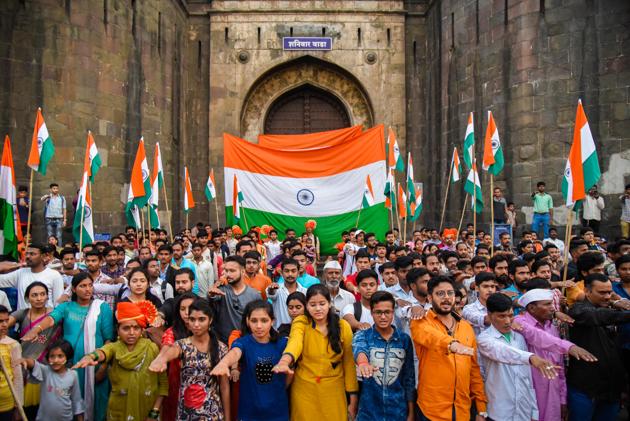How the Left and liberals ceded nationalism to BJP | Analysis
Freedom fighters used nationalism to unite India. But progressive parties later viewed it as a negative force
The Narendra Modi government, in its second term, is dealing with an economic slowdown. While it has adopted corrective measures, their impact is yet to be seen. Yet, surveys suggest that the Bharatiya Janata Party (BJP)-led government’s popularity ratings remain high.

So what makes the Modi government so popular? One reason is its welfare schemes. But, it is seems counterintuitive to argue that a government can be so popular just by virtue of welfare schemes when the economy is slowing down.
The real reason is the combination of welfarism with hard-nosed nationalism. Through 24/7 campaigns, the government has successfully cultivated an image of a nationalistic regime. This image resonates with the masses, making them believe that what is at stake is far more vital than their personal economic hardships. This nationalism involves three aspects — developing a deep hatred for India’s enemies, real or imagined; being aggressive and battle-ready to fight these enemies; and cultural homogeneity of religion, language and dietary habits. In short, it is ethnic and belligerent nationalism, where ethnicity/religion is considered the key unit of nationhood.
But, how did we get here? Over the last few decades, the Left and liberals almost abandoned the discourse on nationalism. They talked of international solidarity of the working class, international sisterhood, concerns of subalterns; but this discourse was not embedded in nationalism. Human rights abuses by security forces were discussed, but the difficult circumstances in which they operate were rarely appreciated. Armed forces were relegated to mere symbols of State repression. Nationalism was perceived as a negative force representing ethnicity and ferociousness of the kind that existed in Europe in the early 20th century. So it became a taboo subject.
This is surprising for two reasons. First, India’s fight against British colonialism was based on our freedom fighters, whether Gandhiji or Bhagat Singh, using nationalism as the rallying point to unite people of all faiths and caste for a common cause. Second, our Constitution makers rejected ethnic nationalism (i.e. the two-nation theory of Hindus and Muslims constituting separate nations), and embraced civic nationalism. As Ashutosh Varshney argues, civic nationalism, as against ethnic nationalism, recognises equal rights for all those born inside the territory of a State regardless of ethnicity, religion or race.
If a nation is an imagined community, as Benedict Anderson argued, then civic nationalists imagine this community as comprising people belonging to different religions/ethnicities who collectively belong to the same nation. Thus, secularism and respect for civil liberties, like freedom of speech and expression, are central to civic nationalism. This nationalism is also consistent with the basic tenets of liberalism.
Jawaharlal Nehru understood the distinction between ethnic and civic nationalism well. Nehru said, “Nationalism does not mean Hindu nationalism, Muslim nationalism or Sikh nationalism. As soon as you speak of Hindu, Sikh or Muslim, you do not speak for India. Each person has to ask himself the question: What do I want to make of India — one country, one nation or 10, 20 or 25 nations, a fragmented and divided nation without any strength or endurance, ready to break to pieces at the slightest shock? Each person has to answer this question. Separateness has always been the weakness of India. Fissiparous tendencies, whether they belong to Hindus, Muslims, Sikhs, Christians or others, are very dangerous and wrong.” Yascha Mounk describes nationalism as a half-wild, half-domesticated animal. Mounk argues that if nationalism remains within our control, it can be of tremendous use.
By vacating the nationalism space, the Left and the liberals, of both the political class and among intellectuals, have allowed the ethnic and belligerent nationalists to mould it in their own way.
A key reason people rejected the Congress in the 2019 elections was because it tried to counter the Bharatiya Janata Party’s aggressive discourse on nationalism with bread and butter issues. While livelihood issues are important, they are a poor response to an emotional discourse on nationalism. A multi-religious and multi-ethnic country like India cannot progress till it is united as one nation — a point that Nehru made repeatedly. The claimants of Nehru’s legacy need to revisit their roots and evolve a passionate, powerful and imaginative discourse on civic nationalism rooted in Indian constitutionalism that connects with masses. Or else, ethnic nationalism will keep weakening the country and undermining civil liberties.






